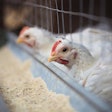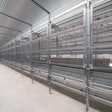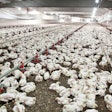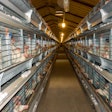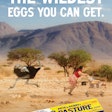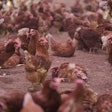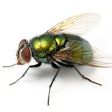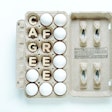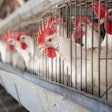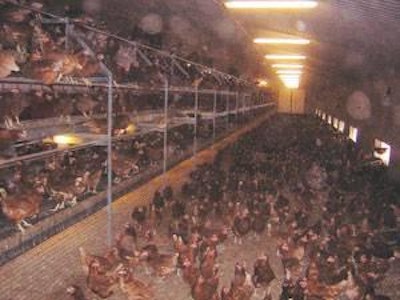
European Union (EU) proposals set out in Directive 1999/74/EC will result in a reduction in stocking density from 11.7 to 9.0 birds/m2 for all units producing barn or free-range eggs from 1 January 2012, and for all newly built or rebuilt systems from January 2002. This, in effect, means a reduction in bird numbers of around 23%. With a ban on conventional (battery) cages and an ever increasing demand for eggs from alternative (non-cage) production systems, EU egg producers could be stretched to the limit to maintain shell egg supplies within the next four years. Clearly, there will need to be significant investment if bird numbers kept in alternative systems are to be maintained let alone increased to supply the gap in egg supply as a result of the cage ban.
The new rules pose two problems:
- How can producers effectively maintain bird numbers when forced to reduce stocking density down to 9 birds/m2?
- How can investment in a new house ensure optimum use of available floor space?
A simple and economical route appears to be the introduction of aviary (or multi-tier) systems in existing or new houses since the usable area available to the birds is increased within any concrete footprint. ‘Concrete footprint' refers to the available floor area within the house prior to the introduction of tiers/aviaries.
Modification of existing buildings
In a typical conventional layer house layout, free-range unit bird numbers can be increased simply by reducing the slatted area by around 45% either side of the nests and installing a two- or three-tier unit in the scratching area. The regulations require that the tiers be arranged to prevent droppings falling on the tiers below. The extra tiers are classed as usable area and can be added to the concrete footprint of the house. In addition, the tiers can incorporate extra feeders and perches.
In this example, the conventional house stocked at 11.7 birds/m2 will accommodate 13,137 birds. Stocked at 9.0 birds/m2, bird number drops to 10,133. Modifying the house in the way described increases bird numbers to 14,303 while still giving a stocking rate of 9.0 birds/m2 an increase of over 41.5%. Compared to the house originally stocked at 11.7 birds/m2, bird numbers are increased by around 8.5%.
New house
For new houses, the aviary system offers the opportunity to make significant savings because extra tiers increases usable area significantly. At the same time, the aviary can be designed to incorporate nests, feeders, drinkers and perches. In most situations, required bird numbers can be achieved by combining tiers with nests with a row of tiers without nests.
In a typical 16,000-bird conventional unit, a building measuring 96m x 20.11m is required. Where aviaries are employed, the same number of birds can be housed in a building measuring 78.35m x 15m a saving' of around 18% on building length and 25% in width. The smaller building offers a clear cost benefit and improves the chances of obtaining planning permission.
Where there are no height restrictions, more sophisticated systems can be used. These require less blueprint floor space thereby significantly reducing house size and costs and incorporate nests, drinkers, feeders, perches, automatic manure removal and climate control.
Rearing for aviary/multi-tier systems
Pullets destined for aviary/multi-tier systems should be trained to jump in order to reach feed and water during the rearing phase. This will accustom the birds to move between different levels. A specific rearing aviary has been developed to encourage chicks as young as four weeks of age to move between different tiers for feed and water.
 0806PIaviary5
0806PIaviary5
Specialised aviary layout



